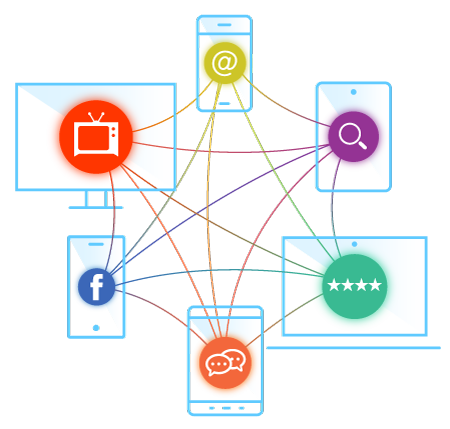Not too long ago I read a book called “Between a Rock and a Hard Place”. This is a true story of Aron Ralston who was trekking alone through the remote Utah desert when an 800-pound boulder he was climbing on shifted and pinned his arm, trapping him inside a slot canyon for 127 hours. (He survived by amputating his now-dead arm on day five.)
The book started off with this epiphany: Geologic Time is Now. The idea is even though desert boulders have been in place for millions of years, they move daily, and anything can happen—TODAY.
The same thinking can be applied to the digital transformation of marketing. Pre COVID-19, this transformation was one of the most important developments in the marketing world. Many companies were working toward adopting these new practices. However, the broad concept of digital transformation can be daunting and somewhat difficult to get a handle on. So, while many brands were embracing digital, others had plans to move gradually in a digital direction over the next several years. No doubt, COVID-19 has shattered those plans and has forced virtually everyone to accept the fact that digital transformation begins now.
Despite the expected benefits of improved efficiency, effectiveness and accountability of marketing efforts due to digital transformation, the reality is that as digital advances, so does complexity.
While the basic stages of the sales funnel are the same, the customer journey has become atomized. There are now thousands of media touchpoints available to reach customers, engage with them and ultimately convert them to a sale. Add in countless minimally integrated marketing technology platforms that build audiences, create messaging, execute campaigns and measure performance and you can begin to see this complexity proliferate. While the promise of digital transformation is compelling, the increased complexity that comes along with it is hindering the success of these initiatives.
Today, COVID-19 has quickly forced every organization to completely rethink every aspect of how they go to market. With even more complexity added to marketing operations, marketers are being forced to consider:
- The commercial and cultural context that brand communication operates in has changed overnight
- Digital experiences have replaced in-person experiences
- Definitions of “engagement” and “experience” will significantly change
- A brand’s authentic “Purpose” must be clearly communicated and understood
- Messaging and brand voice will need to become more empathetic and helpful
- The data privacy landscape is changing
- Efficiency of spend will be under the microscope—every dollar must count
- Innovation and agility will be paramount for every marketing team
For brands to survive the two seismic shifts of increased complexity from digital transformation and the COVID-19 economy, new thinking is required.

At Imaginuity, we are helping our clients reimagine marketing by managing the complexities of the digital transformation of marketing and understand the new financial realities of a COVID-19 economy. Our integrated, multi-disciplinary teams and processes effectively connect the dots throughout the customer journey. This allows us to help our Clients reach the right audience at the right time in the right channel with the right message to drive the most efficient conversions—all on the customer’s device of choice.
The way in which we manage all of this complexity is through AdScience®, our proprietary customer data platform. AdScience collects, analyzes and activatesfirst-, second- and third-party customer data to aid in the development of highly effective, cross-channel marketing plans, ultimately resulting in improved operational efficiencies and better campaign outcomes.
In a COVID-19 economy, marketing accountability will be more important than ever. To this end, AdScience enables our in-house data team to create detailed, insightful data visualizations that extract the most value out of customer databases, managed media campaigns and messaging. These visualizations enable our teams to bring better marketing performance into clear view. AdScience also visualizes multi-touch attribution, providing us with a comprehensive view of the customer journey and the most efficient paths to conversion.
It is likely that brand marketers are about to face the most difficult financial time of their careers. While some might still be on the sidelines waiting for everything to settle down, past crises have proven that brand absence will be a mistake, providing competitors the opportunity to steal market share. Complexity and uncertainly remain. But, the time to act is now. Brands can survive and thrive by reimagining marketing through a simplified data-driven approach resulting in better insights, improved efficiency and more satisfied customers.
